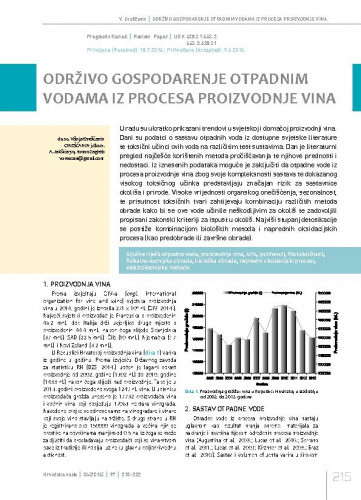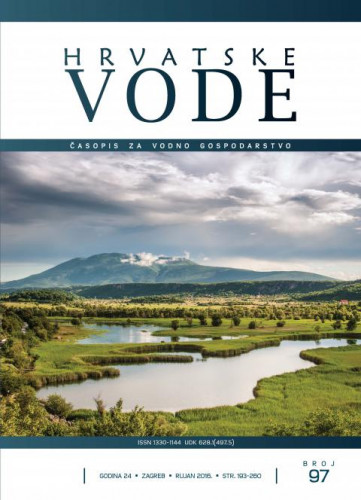U radu su ukratko prikazani trendovi u svjetskoj i domaćoj proizvodnji vina. Dani su podatci o sastavu otpadnih voda iz dostupne svjetske literature te toksični učinci ovih voda na različitim test sustavima. Dan je literaturni pregled najčešće korištenih metoda pročišćavanja te njihove prednosti i nedostaci. Iz iznesenih podataka moguće je zaključiti da otpadne vode iz procesa proizvodnje vina zbog svoje kompleksnosti sastava te dokazanog visokog toksičnog učinka predstavljaju značajan rizik za sastavnice okoliša i prirode. Visoke vrijednosti organskog onečišćenja, sezonalnost, te prisutnost toksičnih tvari zahtijevaju kombinaciju različitih metoda obrade kako bi se ove vode učinile neškodljivim za okoliš te zadovoljili propisani zakonski kriteriji za ispust u okoliš. Najviši stupanj detosikacije se postiže kombinacijom bioloških metoda i naprednih oksidacijskih procesa (kao predobrade ili završne obrade)..; The paper briefly presents the trends in global and domestic wine production. It contains data on wastewater composition from available world literature and toxic impacts of this water in different test systems. An overview of the most frequently implemented treatment methods in the literature is provided as well, including their advantages and disadvantages. Based on the presented data, it can be concluded that wastewater from the wine production process, due to the complexity of its composition and proven high toxic impact, poses a significant risk for environmental and nature components. High levels of organic pollutants, seasonality and the presence of toxic substances require a combination of different treatment methods for rendering this wastewater harmless for the environment and compliance with the prescribed legal criteria for discharges into the environment. The highest detoxification level is achieved by implementing a combination of biological methods and advanced oxidation processes (including preliminary or final treatment).
Sažetak
Dio sveska

